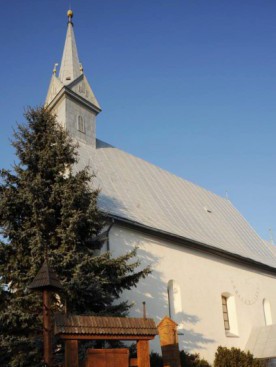The Calvinist Church –VyshkoveVyshkove, situated on the left banks of the river Tisza, was one of the five royal free-towns in the historical Máramaros county, which belonged to the Crown. In the 14th century, it was one of the most important of these five settlements and, in consequence, a fortress was built on the hill overlooking the town. Later, as Khust became more and more important, Vyshkove started playing a less significant role. The church is located on a slightly higher ground, in the northern part of the present settlement. It has been preserved largely in its medieval state. Its walls were built of broken stone and its architectural elements of carved stone. Its nave has a rectangular base, a flat ceiling and is connected to a sanctuary enclosed by five sides of an octagon. The main portal of the church spanned by a lancet arch and encased by a frame consisting of various decorated elements, embellishes the nave’s western frontispiece. On the northern side, one can see an architecturally identical, but far smaller gate. The chancel arch is a lancet arch and the sanctuary had previously a double-cell vaulted ceiling. Today, its ceiling is flat. The entrance to the sacristy was on its northern side, but is has been walled-up. The church was probably built in the 14th century. It is larger than the churches built in the other royal free-towns, which were granted privileges in 1329. The plant-like motifs on the columns embedded in the walls enclosing the sanctuary stem from this period, too, and are repeated on the canopies in the sanctuary of the church in Técső/Tiachiv. |


















